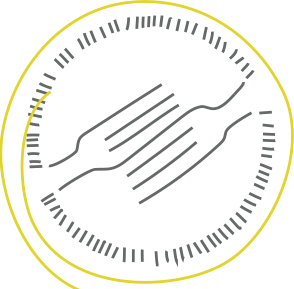Respecting Funny Little Eating Habits
Eating Hunter-style—grilled chicken and French fries in his Batman costume (yes, I let my kids have fries!)
My kid was born with feeding issues. I am thrilled to know that the powers that be have a sense of humor!
Shortly after Hunter (now almost 5-years old) was born, my sweet husband remained with him while the nurses did their necessary newborn testing in the nursery. As I was in and out of sleep, my man with little guy and nurse in tow came into the room to tell me this, “Hunter’s tongue is heart shaped.”
How sweet, my boy has a heart shaped tongue! Then the nurse chimed in, “It seems that your son is tongue-tied. I am not sure how this will effect his feeding but I would like his doctor to take a look.”
Fear swept over me but I tried to rationalize it with, “He has ten fingers and ten toes. Feeding issues I can deal with!” The doctor arrived to confirm that in fact Hunter had a congenital oral anomaly that could affect his ability to eat but we wouldn’t know anything for a few days. Worse case scenario is that he would have to have the membrane connecting the underside of his tongue with the floor of his mouth (frenulum) cut by a specialist. Pretty gnarly but what could we do?
As it turned out, Hunter couldn’t eat. Whether breast milk or formula, it would pour out of his mouth. He lost weight daily so at our pediatrician’s demand, we brought him to a specialist at seven days old to get “clipped”. His tongue was finally released so now he would be able to eat—huge sigh of relief.
But not the case—post frenulectomy (the clinical term for tongue snipping) it took him over an hour to drink 3 oz from a bottle (I couldn’t breast feed due to personal medical issues); for reference, most newborns can down that in 10-15 minutes. He was miserable and so were we. So, we went back to the pediatrician to learn that he had a condition called hypotonia or low muscle tone in his facial muscles that was making it difficult for him to coordinate sucking and swallowing; then off to Dr. John Amato who worked with us twice weekly for nine months to teach us how to improve Hunter’s facial muscle tone and how to manage this arduous journey with our son. Not an easy one.
So, the culinary nutritionist who knows how to help solve other’s food problems couldn’t help her own son! I had to learn how to be OK with the fact that Hunter’s main source of nourishment was from the bottle (once he learned how to suck, he didn’t stop) way past when I was ready to introduce solids; he didn’t take any food until he was eight months old and every time he ate, he gagged and threw up until about a year. If you touched his food he threw his plate on the floor and feeding time was officially over—he liked control! When he finally did start to eat more regularly (around 18 months), his menu was highly limited—pasta and chicken were about as far as I could take him.
But I never gave up. I followed his lead and kept introducing and re-introducing foods until he tried them always letting him feel like he had some level of control. I talked to him about food, took him food shopping and surrendered to him as my regular sidekick in the kitchen (not an easy task). My little one had been through quite a bit and I wanted to honor how he needed to do things.
So, when clients come to me wanting me to fix their child’s picky eating habits, I always aim to understand why eating is an issue. I have learned to respect funny little eating habits, for you never know what a child’s journey truly is. As for Hunter, his medical condition shaped his initial relationship with food—not a good one. And it was and still is my job to guide him towards a connection with food that will keep him safe and healthy through life.
If you would like to comment or share your child’s funny little habits please do so right here and as always let me know if you have any questions.

